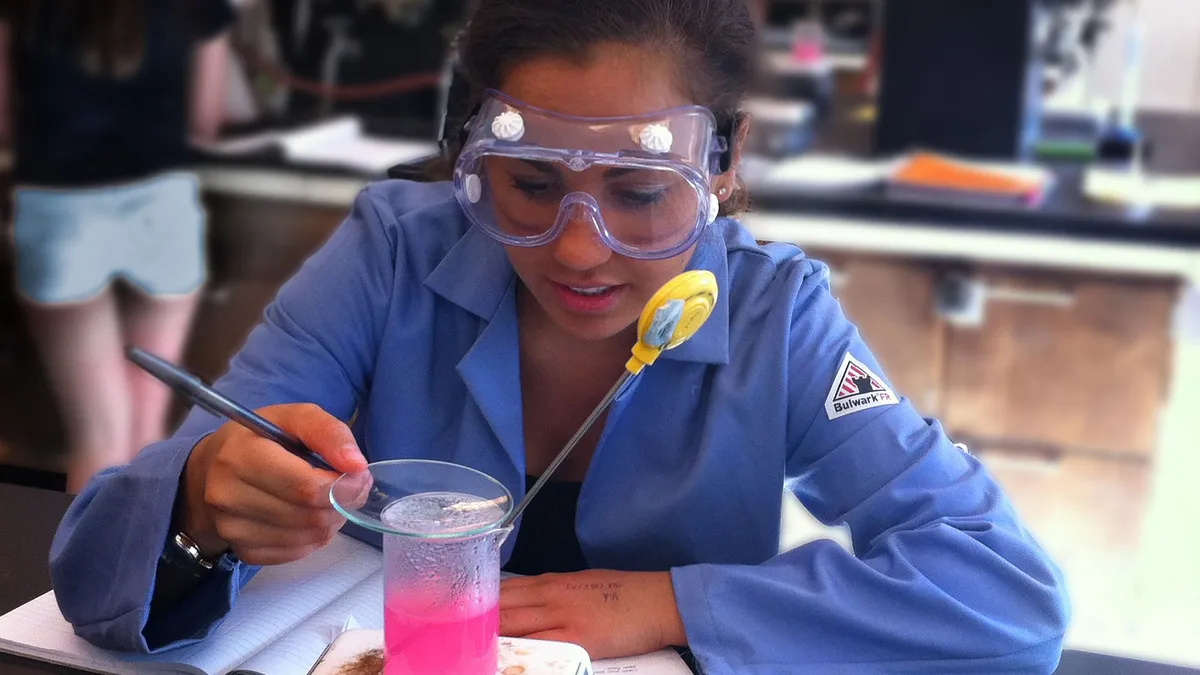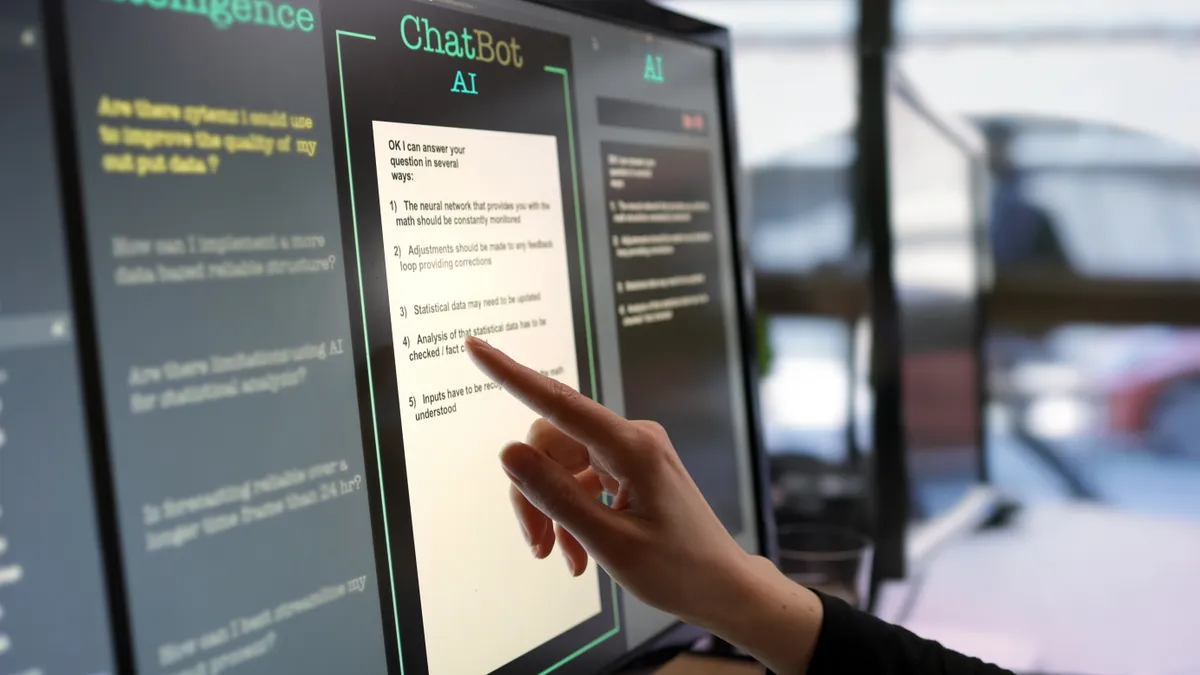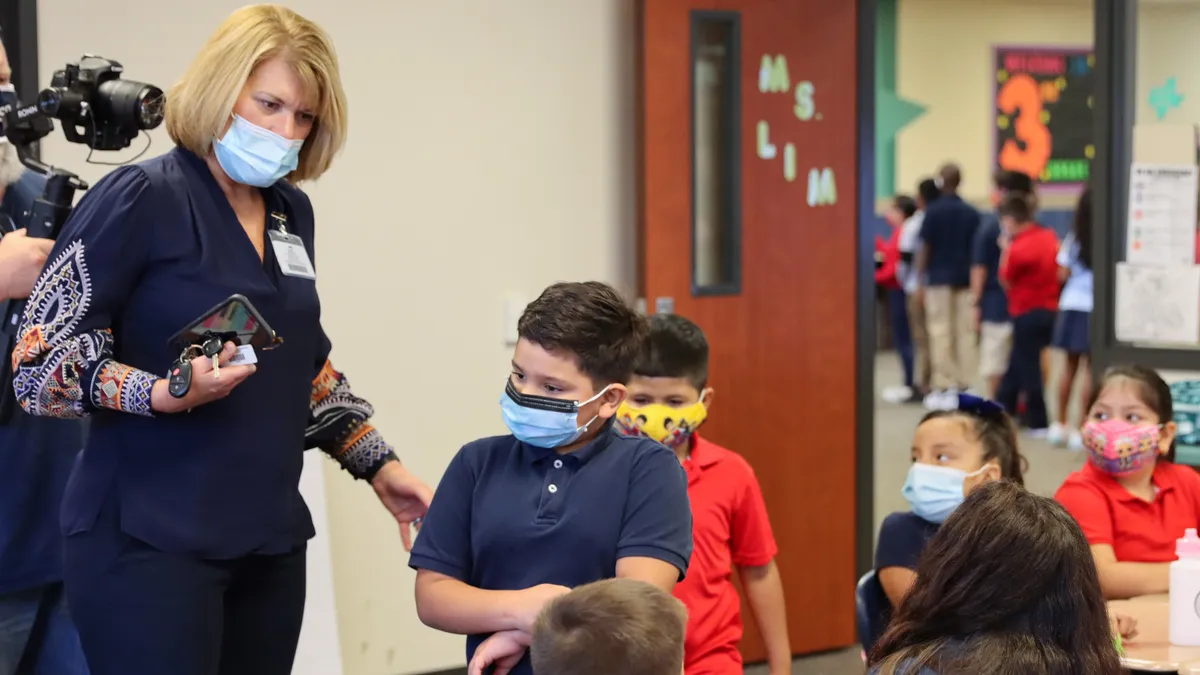Educators looking to engage students more deeply in science, technology, engineering and mathematics (STEM) subjects may want to consider including humor and outside-the-box projects. That’s the findings of a survey of 1,100 U.S. high school students, conducted by the Philadelphia, Pennsylvania-based Society for Industrial and Applied Mathematics (SIAM) in April 2019. Students who participated took part in the MathWorks Math Modeling (M3) Challenge organized by SIAM.
Of the responses to the survey from students, almost 60% suggested educators use “more out-of-the-box, creative teaching methods and promote participation in fun, science-related projects and competitions,” wrote SIAM in a statement.
For educators eager to put novel approaches to STEM subjects into play, these three ideas may lift their classroom lessons above the status quo.
Baldwin Stocker Elementary: Pringles Ring
At Baldwin Stocker Elementary School in Arcadia, California, Camille McQuaid brings cans of Pringles chips into her 4th-grade class. Students don’t eat them, however — at least not at first. Instead they use the chips to build a vertical, freestanding ring, competing to see who can figure out how to complete the task first.
Her 32 students are broken into four groups of eight children, with each team assigned a tall can of Pringles. Some use the entire can, some use fewer, with the size of the ring dependent on the number of chips used.
“This is more of an engineering project,” McQuaid told Education Dive in an interview. “Sometimes I’ll ask how many chips they used, and a lot [of students] will key into the mathematics part of it.”
All of the children figure out the challenge in the end. Those who finish first will go around the room and help other students once they’ve completed their ring. And once they’re done, they get to eat their results. Most important to McQuaid is students discover there isn’t one right answer when applying STEM principles to their work.
“It’s definitely crucial early on for them to realize there are many different ways to solve a problem and there’s not always going to be a black and white answer,” she said. “I love that, at this level, they work together but are also frustrated together, and then to reason, preplan and try again.”
Mountain Road Elementary School: Berlin, Germany Cold War STEM Project
At Mountain Road Elementary School in Woodstock, Georgia, 3rd-grade and 5th-grade students in Anna Jurnack and Kristin Covington’s classes are building a Cold War-era replica of Berlin, Germany. The assignment ties to lessons the teachers have taught about the period, with the focus on Germany and the Berlin Wall.
The core of the project is the engineering students tap to construct the buildings, map and footprint of the city. Both Jurnack and Covington have integrated math standards into the project, as well, which includes finding the volume of buildings.
Students also code an Ozobot robot that travels down the mockup of the Spree River, stopping at different points, where they can then scan a QR code which opens a video of the students talking about key moments of the war.
“These projects integrate cross-curricular standards and reinforce what has been taught,” Covington and Jurnack said in a co-written email. “It also allows students to take ownership of their own learning. This generation of students think and learn differently and are very technology driven. It is important to give them the tools they need to be successful in their future.”
Discovery Public School: Robot Olympics
If teacher/librarian Geoff Ruggero doesn’t have the robots out in the library when students come down to visit, he'll be asked for them. Ruggero — who has been running the library at Discovery Public School, a K-8 campus in Maple, Ontario, for seven years — had no experience with robots when he took on his current role, he said in an interview.
Today there are dozens of robots and kits in the library, including those from Ozobot, Sphero, LittleBits, Wonder Workshop and Microbits. Some of these played a role in a robot Olympic Games set up by Ruggero in 2018, at the same time as that year's Winter Olympics. Students undertook challenges designed to be dependent upon the abilities of the robots and themselves.
With Wonder Workshop’s Dash, for example, students participated in a curling competition using an attachment and then coding the robot to push rocks. Depending on the speed, length and force the students had the robot apply, they could see which rocks got the closest to the center target. Sphero robots, meanwhile, were used for a half-pipe competition, with students putting to use their cardboard and engineering skills to build a ramp. And Ozobots competed in a speed track, where students used markers to draw the line the robots were coded to follow, adding symbols to get them to speed up, slow down and change direction.
Ruggero believes students must have STEM skills to compete in the job market when they graduate. Engaging them in projects with robots, which they enjoy, helps them not only embed these tools in their lives but also pass their knowledge on to others.
“We’re promoting this kind of [hands on] learning and creating in all grades,” said Ruggero. “Looking forward at jobs, students are going to need to be problem solving and thinking on their feet. I also try to help them think outside the box and how they could use these robots in the classroom.”




















